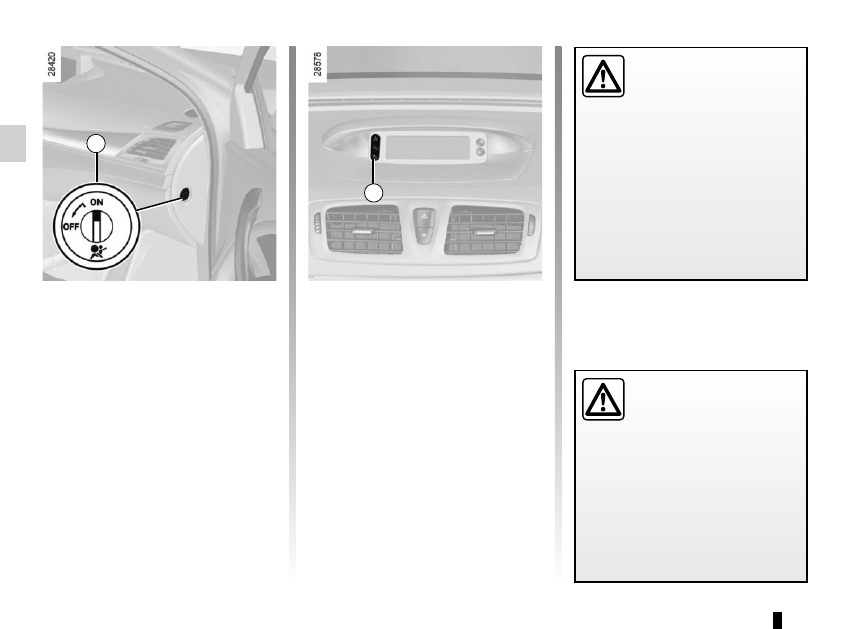Renault Megane Sport Tourer (2016 year). Manual - part 4

1.50
CHILD SAFETY: deactivating/activating the front passenger air bag
(3/3)
4
Operating faults
It is prohibited to fit a rear-facing child
seat to the front passenger seat if the
front passenger airbags activation/
deactivation system shows a fault.
Allowing any other passenger to sit in
that seat is not recommended.
If warning lights
›
and
¹
are
lit at the same time.
Contact your approved dealer as soon
as possible.
Activating the front
passenger airbags
You should reactivate the airbags as
soon as you remove the child seat from
the front passenger seat to ensure the
protection of the front passenger in the
event of an impact.
To reactivate the airbags : when the
vehicle is stationary, push and turn
lock 1 to position ON.
With the ignition on, it is essential to
check that warning light 4
›
is lit
on the central display, and that it goes
out after a few seconds.
1
The passenger airbag must
only be deactivated or acti-
vated when the vehicle is
stationary.
If it is interfered with when the vehi-
cle is being driven, indicator lights
å
and
©
will come on.
Switch the ignition off then on again
to reset the airbag in accordance
with the lock position.
DANGER
Since operation of the front
passenger airbag is not
compatible with the position
of a rear-facing child seat, NEVER
fit a restraint system for a rear-fac-
ing child in a seat protected by an
ACTIVATED front AIRBAG. This
can cause the CHILD’S DEATH or
SERIOUS INJURY.